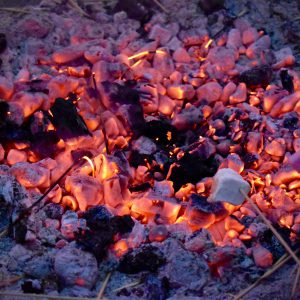How Cold Is It At a Hockey Game? What You Should Wear To a Hockey Game!
Are Hockey games cold? What should you wear to an inside or outside game? We will tell you what types of rinks are colder than others, why, and how to stay cozy! And fear not, fellow chilly thrill-seekers because we’re here to unveil the ultimate guide and gear to keep your tootsies toasty and your spirits high at ice rinks. Hail the Infrared Technology that will keep us toasty!
We will also share some sizzling style tips and hot hacks. We’ve got the inside scoop on staying warm and funky at those icy showdowns. So, grab a cup of cocoa, and get ready to unleash your inner polar bear as we dive into the coolest (literally!) sports experience ever!

- The Ice Surface Temperature, The Boards and Spectator Areas
- What to Wear to Inside Ice Rink Arenas (Professional Arenas)
- Infrared Technology in Clothing: The Cozy Secret Weapon for Hockey Parents
- Temperature at Recreational Hockey Arenas
- What to Know About Outdoor and Pond Games
- What to Wear (Outdoor Games):
- Other Ways to Stay Warm At a Hockey Game
- Why Braving the Chill is Worth the Thrill
There are outdoor rinks, indoor professional ice hockey arenas, and then those recreational hockey arena temperatures played. Depending on the venue, they all come with vastly different room temperatures in the rink. Hail to the Civil Engineers of our world!!
Let’s break the ice on this frosty rumor mill and get the truth about our beloved ice hockey rinks! You know the tale or you may be just curious are there penguins selling sunscreen at the door? That’s as slippery as the ice itself! Sure, the game is played on a frozen rink, but don’t fret! Once you step into that ice arena, you won’t be caught in a scene from “Frozen.” The truth is, we’ve got more science up are coat sleeves to keep the ice from melting and you from developing frostbite. Let’s give thanks to the technicians of both the ice and those who keep us warm and cozy, during an action-packed good time!
The Ice Surface Temperature, The Boards and Spectator Areas
Professional Arenas
Let’s begin with the reason behind the misconception – the name maybe? Ice Hockey may not be helping its cause. There are all different types of arenas and ambient temperatures in which you will stand or sit.

Let’s start at ground (ice) zero, the ice temperature on the playing surface! Come on folks, we are going to apply some good old middle-school science and break this down. The temperature of the ice must remain strictly between 19 to 20 degrees Fahrenheit and the ice surface should never tip over 24 degrees Fahrenheit.
Professionals try to keep that ice nice and cool, right around an average of 22 degrees. But here’s the deal, there are lots of things that can mess with the ice conditions. Two big ones are how many people are there watchin’ the game and how well they control the temperature in the arena.
Now, in fancy NHL arenas like the SAP Arena in San Jose, they crank it even colder, around 16 degrees. Why? Because when you pack in over 17,000 fans, it’s like having 17,000 60-watt light bulbs making things warmer!
Take, for instance, the citation from Advances in Building Energy Research “Detailed heat flux, relative humidity, and temperature data for the ice pad and the indoor air are used for a heat balance calculation in the steady-state regime, which quantifies the impact of each single heat source.” (1)
Think about it like this, hockey’s a fast sport, and the players need that ice to be in top shape. So they adjust the temperature based on how many folks are there and how good the arena’s climate control is. It’s like walking a tightrope they are trying to get just right!
So, don’t run to the sauna yet, my friends. This is when climate control with HVAC and Air Handling Units (AHU) systems allows the magic to happen. At professional games, the ice technicians keep a tight temperature margin and balance with the cooling systems to maintain both where you sit in the NHL arena at a comfortable 50-60°F (10-15°C). The stadium seating of professional ice areas lends it to get warmer as the heat rises!
Three Examples of how the AHUs scientifically balance the need for ice and the comfort of spectators are depicted by Energies (2):


Hockey is a fast sport, and the players need the ice to be in top shape. So, they adjust the temperature based on the number of people there and how good the arena’s climate control is. It’s like a little balancing act to get it just right!
Oh, and here’s a cool trick they use to keep the ice clear. They’ve got this super high-tech humidification system to zap away the fog that can show up in cheaper arenas.
Next time you step into a big arena, you’ll feel that coolness. Our bodies are pretty rad at getting used to it, and with all the technology and the heat from the fans, they’ve got a solid plan to keep that ice in perfect condition. It’s like a science, man, to make sure everyone has a blast watchin’ the game!

Also, if you are arriving a couple of hours before the game to see warm-ups and it is still an empty arena, as you stand down by ice level (near the boards) you may be a bit chillier than a period or two in when in the middle or upper level. This is also due to the tens of thousands of fans entering the rink, as well!
What to Wear to Inside Ice Rink Arenas (Professional Arenas):
Let’s aim for the fun fan fashion look here! Team colors, Jerseys, and Hats with official logos are all acceptable!
As an Amazon Associate, I earn from qualifying purchases. But I also endorse only what I love and have tested! #ad #commisions earned
- A Winter hat (fan gear is a good choice) and even a baseball cap is suitable if in team colors
- Light Layers with a tee shirt short or long sleeve and a hoodie
- Layer on top with a light jacket or Hockey Jersey
- Layer again with fan fashion in mind with a Hockey Jersey or a Vintage-style hockey sweater is a smart choice (Make sure it is large enough to go over the sweatshirt or hoodie).
- Sneakers or comfortable shoes. The arenas can get a bit crowded. I would recommend covered shoes.
Infrared Technology in Clothing: The Cozy Secret Weapon for Hockey Parents
Have you ever sat at a chilly hockey rink, wishing you had just one more layer to keep the cold at bay? If you’re like me, by period 3 – I was wrapping myself up like a cocoon. I am not one of those hockey parents who bravely endure frigid temperatures with just a team hoodie! No…
As an Amazon Associate, I earn from qualifying purchases. But I also endorse only what I love and have tested! #ad #commisions earned
I bring you…infrared heat in vests, jackets, even socks! This might be the game-changer you’ve been looking for. But let’s face it, hearing “infrared” in relation to clothing can sound a bit intimidating. Is it safe? How does it work? Let’s break it down in a way that’s both fun and educational for all our ice hockey enthusiasts out there.
- Graphene Heating for Superior Comfort: Our jacket utilizes advanced graphene heating panels, delivering safer, more consistent warmth compared to traditional heating wires. Not only does it keep you cozy, but the far-infrared waves also promote circulation, providing a soothing, wellness-enhancing experience.
- Fashion-Forward Design with Protection
Disclaimer: Now, these clothing articles you may pick up are not FDA-regulated and we are not medical experts. But, this research below makes me feel a little better about considering not only the toasty feeling of a heated vest or jacket but also the potential collateral benefits.
1. Arthritic and orthopedic pain control:
At first, “infrared” might make us think of some high-tech, potentially hazardous gadget. But, surprise! Infrared therapy is both safe and natural. It’s used as an alternative treatment for a variety of health conditions including muscle pain, joint stiffness, and even arthritis. (4)
2. Boost for Cardiovascular Health:
Every time our hockey champs take a swift turn with the puck, they rely on oxygen-rich blood. Us parents are immobile and are just standing popsicles! Infrared technology plays a role in cardiovascular health according to Batsaida B. Laguipo, Angela in her article Infrared Therapy: Health Benefits and Risks.
She explains this is due to the release of nitric oxide. This nifty molecule relaxes the arteries, prevents blood clotting in the vessels, battles free radicals, and keeps our blood pressure in check. Think of it as a cardiovascular power play for us parents.
3. Pain and Inflammation Relief: Infrared Therapy can offer some solace.
Infrared medical therapy has the ability to penetrate deep into the skin allowing it to act as a beacon, bringing oxygen and nutrients to injured tissues. This promotes faster healing, reducing pain and inflammation – it’s like having a penalty killer for muscle pain.In fact, I found further research from Tsai SR, and Hamblin MR. “Biological effects and medical applications of infrared radiation” that Soccer players have used heating devices in medical studies during sleep to study the effect of muscle rejuvenation. In addition, research on such attire and dressings crafted from infrared-emitting fabrics indicates a boost in blood flow and a reduction in exhaustion among soccer athletes. This approach might offer a versatile solution for on-the-go lifestyle benefits (like outdoor events, rest, and home care) and could present an alternative to conventional infrared lamps and saunas for medical treatments (5).
4. Muscular Recovery Boost:
With infrared tech, the mitochondria (muscle power and energy) within cells get a boost, making it a top scorer in promoting the repair and growth of muscle cells and tissues.
5. Detoxification:
For our health-conscious hockey parents, infrared therapy is a boon. When applied via saunas, it elevates the body’s core temperature. This process instigates detoxification at the cellular level, fortifying the immune system and aiding biochemical processes, including improving digestion. Think of it as a refreshing line change for your body. (4)
In the face-off circle between warmth and health, infrared clothing seems to be on a breakaway. So, next time you’re rooting for your child, swaddled in infrared jackets or vests, not only will you be comfortably warm, but you may also be harnessing a slew of health benefits?! And remember, whether on the rink or in life, it’s all about staying in the best shape possible! So, let’s lace up and stay warm with infrared or just a jog around the arena, Hockey moms and dads!
Temperatures at Recreational Hockey Arenas
Recreational Hockey Arenas can still be cold, not “outdoor rink” cold, but cold. Expect a typical temperature of 40-60 degrees Fahrenheit in the recreational arena (truth be told…in some I can see my breath). Some rinks are just notoriously cold. My ice hockey parent friends know when, “Oh that’s is a cold one! So, if you are unsure, you can always check with another parent.

These cool temperatures ensure the ice remains in good condition for players to enjoy the game while providing a comfortable environment for spectators. The players like hard ice, and soft ice makes for a bad game or practice.
Some kind-hearted ice rinks have heaters! That’s right Parents….some take a quarter or two. Others can just be turned on usually on the wall behind the seats. And some rinks provide heat above the seats and are completely life-changing!
If the arena lacks separate heating for the spectators, let me caution you that by the end of the 2nd period, your body might begin to feel the chill. It’s essential to have an extra layer with you to stay warm because the arena seating might not have much heat to keep you cozy. So, be prepared, and having that extra layer can make a real difference in keeping you comfortable throughout the game.

Many recreational hockey arenas have metal seating. So, bring a stadium seat or pad to put between your bum and those cold conducting metal seats!
What to Wear To Inside Hockey Arenas (Recreational):
- Winter/ Team hat
- Gloves of mittens
- Scarf
- Long-sleeve shirt or sweatshirt
- Long pants
- Warm Jacket or Winter coat
- Winter Boots – you have seen them from Uggs style to insulated Duck Boots
- Blanket or something to wrap your shoulders come 3rd period
What to Know About Outdoor and Pond Games
I am not going to mince words here if the water needs to below freezing and the ambient temperature by rinkside is cold! You deserve to know the truth.
This is when we get serious about dressing warmly. If you do not take what we say seriously here, you will be running back to the car.
Yet, Pond Hockey and outdoor rinks will be some of the most treasured memories whether you are going to watch the Winter Classic, or your child for a pick-up game or league recreational game.

It is chock full of roasted marshmallows, smores, hot chocolate, and fire pits close to the ice surface…but not too close.
What to Wear (Outdoor Games):
- Time to dig into the closet. What I usually stock up on my:
- Warmest hat that covers my ears, or consider your cutest ear muffs or head wrap
- Insulated or Wool Socks
- Scarf
- Layers of clothing, and repeat
- Heavy coat (longer length)
- Mittens or Gloves
- Winter Boots
- Blanket or something to wrap around your shoulders from the 1st period on
- Hand warmers, toe warmers
- Cardboard or some kind of barrier between your feet and the area where you will be standing (maybe a myth, but we swear if you can keep a barrier between the boots and cold earth, you will be warmer).
Embracing the Warmth of the Game
There is just no denying the fast pace of the game, the fan fever, and the thrill of the game. That excitement of the game has historically kept fans flushed and warm with adrenaline pumping through their veins, the collective energy of the crowd generating a vibrant atmosphere, and the intense action on the ice captivating their attention and distracting them from the chill of the arena

And once the communal effect of cheering with passionate fans for one team, one becomes captivated and seems to tolerate anything, and just embraces the entire experience. Jumping up and down also produces a lot of heat! Still, you might want to add a team blanket to the list, just in case.
OtherWays to Stay Warm At a Hockey Game
At your local recreational rinks, most have Cafes with warm food and drinks! There’s nothing quite like savoring a steaming hot coffee or indulging in a comforting cup of hot chocolate while gliding around the icy wonderland of ice rinks.

Again, when braving the chilly ice rinks, those trusty hand warmers and toe warmers can be a lifesaver in keeping you cozy and comfortable when at a chilly recreational indoor or outdoor rink.
Get up and move around at intermissions and breaks. Give your body a break by going into a more heated area.
Don’t forget the padded seat and a personal blanket or shaw. Just wrapping that around your shoulders makes a huge difference and you will maximize your enjoyment and warmth.
Huddling together with family, friends, and fellow fans not only creates a sense of camaraderie but also generates body heat to keep everyone comfortable throughout the game. With these ingenious ways to stay warm, you can fully immerse yourself in the excitement of the ice hockey game without letting the cold bother you one bit.
Why Braving the Chill is Worth the Thrill
Braving the occasional chill or preparing for an ice hockey game is unquestionably worth it, considering the unmatched experience it brings.
As you step into the arena, the electrifying atmosphere takes hold and ignites a sense of anticipation, hope, and excitement. The fast-paced action on the ice, the skillful maneuvers of the players, and the cheers of the crowd create such a thrill that it warms the heart. You become part of a passionate community, sharing collective moments of celebration, and suspense with fellow fans. The cold becomes a minor inconvenience compared to the joy of witnessing remarkable goals, breathtaking saves, and the sheer camaraderie that binds everyone together. Whether you’re cheering for your child, or favorite team or simply appreciating the sport’s intensity, the goosebumps and shivers fade into oblivion, leaving you with lasting memories with family and community who shares a love for the game that transcends the frosty temperatures.
References:
1) Andrea Ferrantelli, Klaus Viljanen, Jarek Kurnitski “Energy analysis in ice hockey arenas and analytical formula for the temperature profile in the ice pad with transient boundary conditions”, Advances in Building Energy Research, Volume 15, 2021, Issue 4, Pages 499-522 | Received 07 Mar 2019, Accepted 02 May 2019, Published online: 14 May 2019, https://doi.org/10.1080/17512549.2019.1615549
2) Taebnia, M.; Toomla, S.; Leppä, L.; Kurnitski, J. “Air Distribution and Air Handling Unit Configuration Effects on Energy Performance in an Air-Heated Ice Rink Arena”. Energies 2019, 12, 693. https://doi.org/10.3390/en12040693. (This article belongs to the Special Issue Energy and Technical Building Systems – Scientific and Technological Advances)
3) Hakan Caliskan, Arif Hepbasli, “Energy and exergy analyses of ice rink buildings at varying reference temperatures”, Energy and Buildings, Volume 42, Issue 9, 2010, Pages 1418-1425, ISSN 0378-7788, https://doi.org/10.1016/j.enbuild.2010.03.011. (https://www.sciencedirect.com/science/article/pii/S0378778810000885).
4.
Angela Betsaida B. Laguipo, BSN, Reviewed by Dr. Liji Thomas, MD; “Infrared Therapy: Health Benefits and Risks; News-Medical.net; Last updated: January 30, 2019; https://www.news-medical.net/health/Infrared-Therapy-Health-Benefits-and-Risks.aspx#:~:text=Infrared%20therapy%20is%20widely%20used,arthritis%2C%20to%20name%20a%20few.
5. Tsai SR, Hamblin MR. Biological effects and medical applications of infrared radiation. J Photochem Photobiol B. 2017 May;170:197-207. doi: 10.1016/j.jphotobiol.2017.04.014. Epub 2017 Apr 13. PMID: 28441605; PMCID: PMC5505738.






